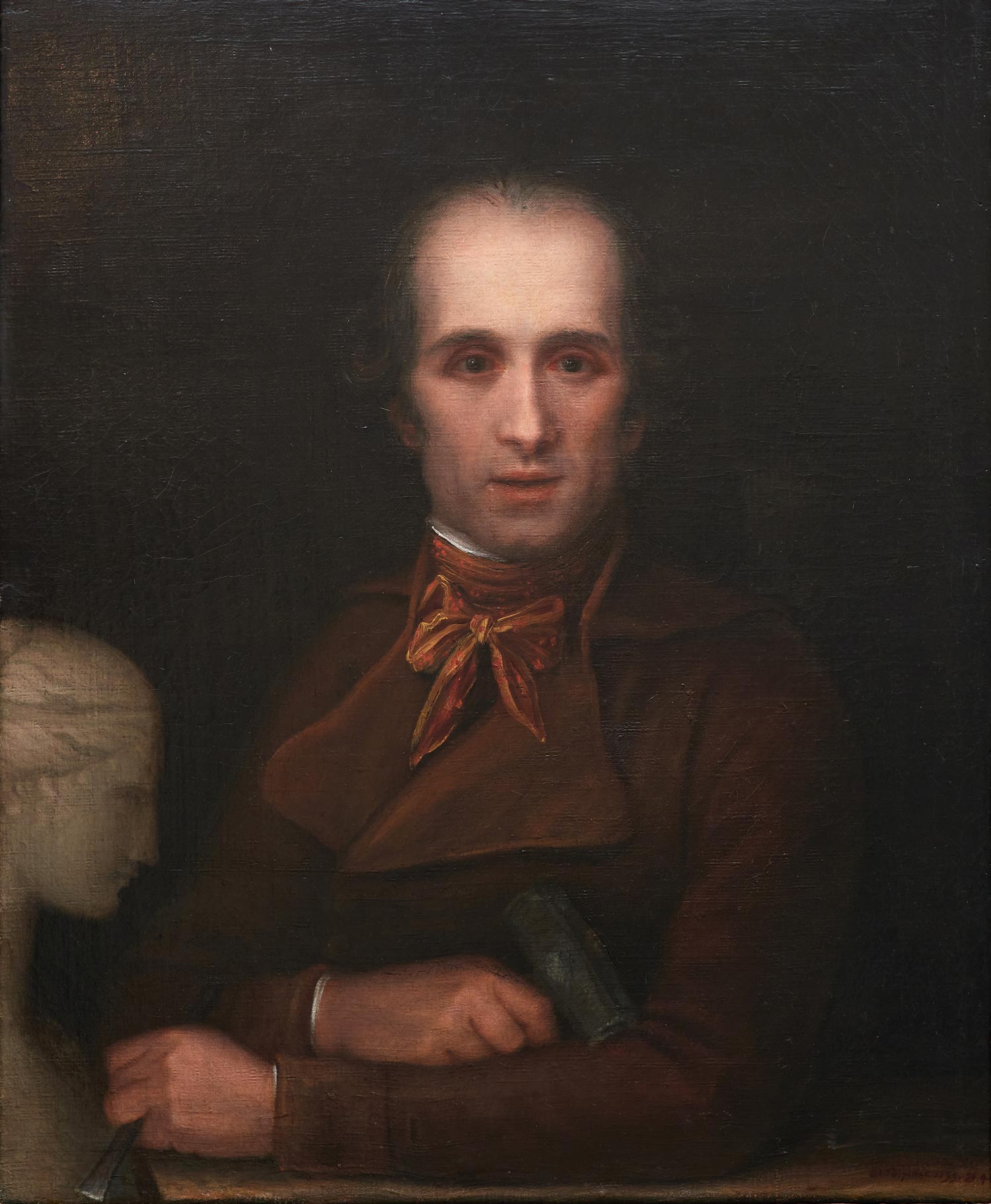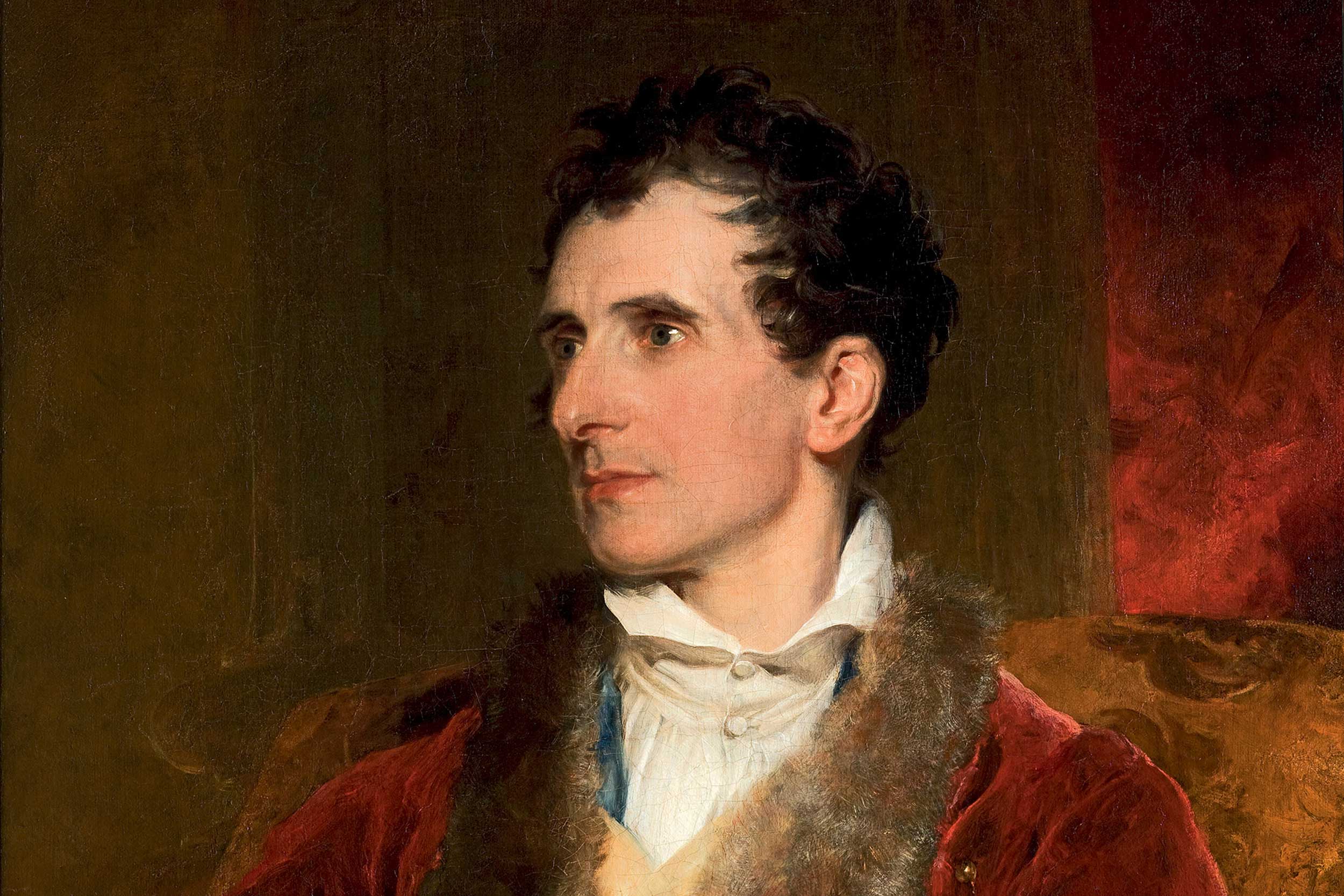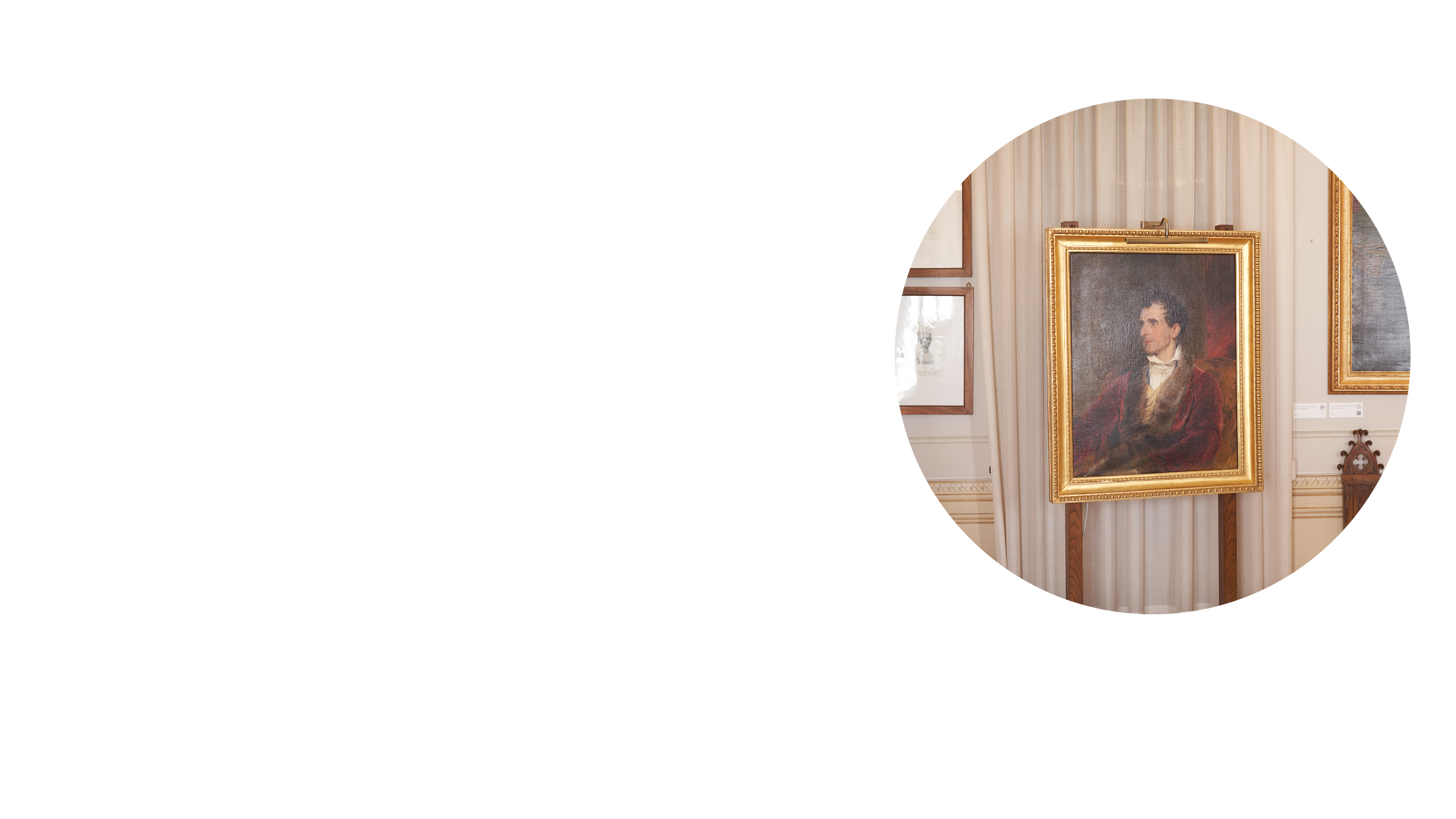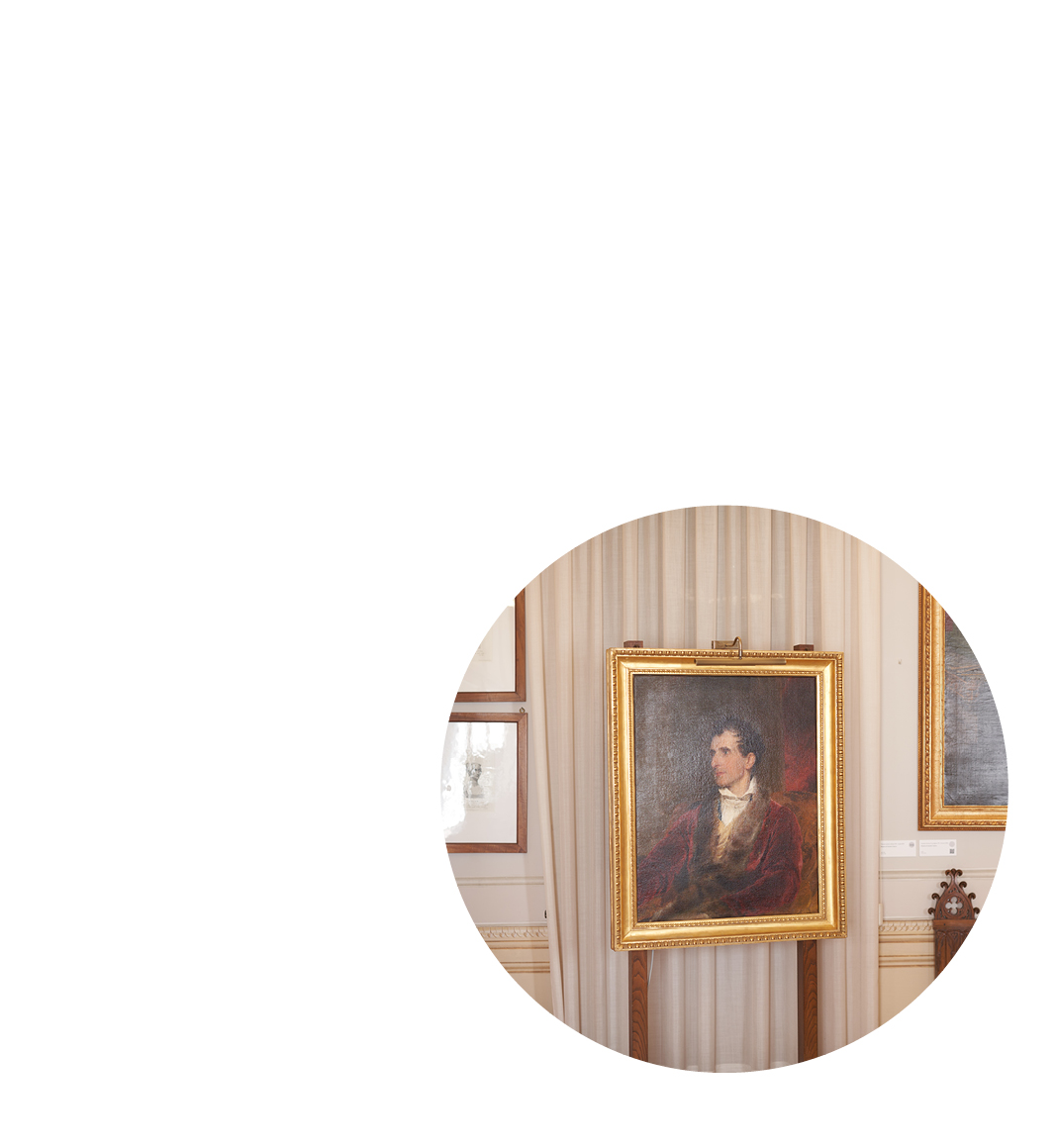Antonio Canova’s Biography
Antonio Canova was born on November 1st, 1757, in Possagno. Thanks to Pasino, his grandfather, who had arranged for him to partake in Giuseppe Bernardi’s workshop initially in Pagnano d’Asolo and subsequently in Venice, he was able to enter the sculpture world very early on.
In Venice he studied drawing at the Accademia del Nudo and not long after was able to open his own studio. Here he received and realized his first important commissions, Eurydice (1773-1775), Orpheus (1775-1776) and Daedalus and Icarus (1779), which you can find in Venice at the Museo Correr. These were among his very first art pieces and they were all realized for Senator Giovanni Falier.
In 1779 he made his first trip to Rome, where he encountered Neoclassical art and the ideas of Enlightenment theorized by Anton Raphael Mengs and Johann Joachim Winckelmann.
In the same year, he also travelled more towards the south and visited the archaeological sites of Herculaneum and Pompeii and was greatly influenced by ancient Roman and Greek art.

Antonio Canova, Self portrait, 1821, plaster, Possagno, Museo Gypsotheca Antonio Canova

Antonio Canova, Self portrait, 1799, oil on canvas, Possagno, Museo Gypsotheca Antonio Canova
In 1781 Canova settled in Rome and opened his workshop near the Tiber River, which he utilized as means of transport for the marble blocks coming from Carrara.
In Rome the artist created some of his most famous sculptural masterpieces: Cupid and Psyche (1793), The Graces (1816), Funeral Monument to Clement XIII (1792), Fainted Magdalen (1822) and many more.
In 1798, when the French troops arrived in Rome, Canova returned to Possagno where he devoted himself to painting: many of the oil paintings of this period became preparatory studies for later sculptural works. On a visit to Vienna later that year, he was persuaded by Duke Albert of Saxony to design one of his most poignant tomb monuments, Funerary Monument to Maria Christina of Austria (Vienna, Augustinerkirche, 1805). During this time, he also travelled to Bohemia and Germany.
Two years later the Sculptor went back to Rome with his half-brother, Giovanni Battista Sartori, who moved in with him and served as his secretary and sole heir.
After Napoleon was appointed First Consul of France, Canova portrayed many members of the Bonaparte family. The sculpture of the emperor’s favourite sister, Paolina Borghese Bonaparte, represented as Venus Victrix (1804-1808) is, to this day, one of his best works.
Of fundamental importance was the diplomatic assignment entrusted to him by Pope Pius VII in 1815, he was sent to Paris to bring back the many art treasures stolen during Napoleon’s ascendancy. Thanks to him a great number of Italian masterpieces were able to return home.
The last masterpiece Canova designed was the new parish church for his native town, Possagno. The construction of the Temple began in 1819, but the artist never saw the work completed as he died three years later, on 13th October 1822 in Venice.
During his life, Antonio Canova was an artist and a patron, he knew the most important representatives of art and politics of his time, and could speak English and French. His art was praised all over Europe and today his sculptures are preserved in the major museums of the world. Despite his fame, he never forgot his origins and his native town, Possagno, where today you can find the Canovian Gypsotheca, the unique treasure that preserves his historical and artistic heritage.

Antonio Canova bas born on November 1st, 1757, in Possagno, a town near Treviso in the North of Italy. His father Pietro died at the age of twenty-six when Canova wasn’t even four-years old. His mother, Angela Zardo, not long after her late husband’s death, married Franceso Sartori and left Canova to live with his paternal grandfather, Pasino Canova.
The latter was a skilled stonemason and by bringing him along to his work, taught his grandchild all the tricks of the trade.
According to a legend that dates to the Romantic age, Pasino faced some economic problems and was forced to put Canova to work as an assistant cook at nobles Falier’s villa in Asolo. It was here that he showcased his sculptural abilities for the first time, he was able to sculpt a lion out of butter that was then used as centerpiece for a lavish lunch.
Due to Canova’s promising talent, Pasino with the support of Senator Giovanni Falier, sent him to stay with and work in Giuseppe Berardi’s, known as Torretti, workshop in Pagnano d’Asolo. Here the artist received his first training, and in the fall of 1768 when Torretti returned to his Venetian workshop in Campo Santa Martino, Canova, only eleven at the time, joined him there.

In Venice, a young Canova worked in Torretti’s atelier and at the same time attended the Accademia del Nudo. His grandfather, certain of his grandchild’s talent, sold a small piece of land and with the money he made was able to allow Canova to work half days so he could dedicate himself to drawing and studying antique art pieces the rest of the day.
The first Venetian art pieces realized by Canova were the two Baskets of Flowers and Fruit (1772) for Senator Giovanni Falier (stored in the Museo Correr in Venice), and the sculptural group Orphee and Eurydice (1775-76) destined to be displayed in the garden at villa Falier in Asolo.
In 1775, once he had gained some popularity in Venice, Canova decided to open his own studio in Santo Stefano and here he realized the statues commissioned to him by Falier. In 1776 the artist was able to increase his notoriety when these art pieces were displayed in the “Fiera dei Sensa” in St. Mark’s Square. So much so that the following year Prosecutor Pietro Vittor Pisani commissioned him a statue depicting mythological creatures, Dedalo and Icarus. The latter was completed in 1779 and was displayed in the Professors Pavilion at the “Fiera dei Sensa”. This allowed Canova to obtain his well-deserved recognition in the Venetian artistic scene and the budget to undertake a study trip to Rome.

In 1781 Canova decided to leave Venice and move to Rome, where he opened his workshop near the Tiber River. Here he received many important commissions, including the sculptural group Theseus and the Minotaur (1781-1783) and Psyche (1789-1792) commissioned to him by Venetian ambassador Zulian. He was acclaimed by critics as the greatest modern sculptor and his fame grew both in Italy and abroad, allowing him to obtain commissions from important patrons, such as pontiffs and European sovereigns.
Between 1795 and 1796 the artist was hugely prolific: he created a series of sculptures, including Hebe (first version in 1796), Adonis and Venus (1793-1795), Hercules and Lichas (1795-1815), Creugas and Damoxenos (1800) and one of his most famous masterpieces, Cupid and Psyche (1787-1793). In 1802 Pope Pius VII appointed him General Inspector of Antiquities and Fine Arts, a position that was previously held by Raffaello. Canova dedicated a lot of time and personal resources to this position; he curated the set-up of the antiques in the new Museum Chiaramonti and also solicited a law that prevented art pieces from being exported without authorization.

Antonio Canova’s fame reached France and more specifically piqued the interest of Napoleon Bonaparte (1769-1821), that after the Napoleonic campaigns, funded the “First French Empire” and assumed the title of First Consul.
In 1802, he invited the artist to Paris to commission him a portrait. Canova initially declined, stating that “how could he as a proud Venetian, work for the one who made is native town a commodity and destroyed the glorious Government”, however, he later decided to accept his invitation. In October 1802 he arrived at Saint-Cloud Palace where he was welcomed by Napoleon himself for the realization of the art piece. Throughout his career he went on to realize multiple pieces for the Bonaparte family.
In 1815, after Napoleon’s defeat, the artist returned to Paris, but this time as General Inspector of Antiquities and Fine Arts of the Papal State, with the assignment of bringing back to Italy all the art pieces that were stolen during the Napoleonic campaigns. Canova succeeded in his mission and was able to retrieve a great number of Italian masterpieces.

In 1815 Antonio Canova went to London to pass his judgement on the Parthenon Marbles, displayed at Burlington House. He defined them as “an art piece by the best artists the world has ever seen”. Following his assessment, the English government considered the marbles original and decided to purchase them and exhibit them at the British Museum in London.
While in the English capital the Artist was also invited to a banquet organized in his honor by the Royal Academy and was portrayed by the painter Thomas Lawrence.
King George IV was among his important English patrons and commissioned him two sculptures: first, Venus and Mars (1816), allegory of war and peace, displayed in February 1822 at Buckingham Palace, and secondly, a copy of The Three Graces (1812-1817).

After the canons refused to display the statue Religion inside the basilica, Canova decided to redirect the money destined to the statue to the construction of the Temple of Possagno. The artist decided to take on the entire cost of the construction of the new parish church and asked the locals to support by providing the necessary materials, such as lime, stones, and sand for free. The people of Possagno were more than happy to help and supply what was asked and also made themselves available to work on nights and during holidays. Since he was living in Rome at the time of the construction and could not actively participate, he received weekly letters to stay updated on the progress of the work.
Seen as Canova died on October 13th ,1822, he was never able to see the Temple completed. His half-brother and sole heir, Gianbattista Sartori, saw the construction through. He was also the one who, after his brother’s death, moved all the plaster models from the Roman workshop to Possagno, and gifted the town the incredible heritage that we can admire to this day in the Gypsotheca.

Antonio Canova, Potrait of Giovanni Battista Sartori, 1821, plaster, Possagno, Museo Gypsotheca Antonio Canova
Relationship with his native town, Possagno
Although Antonio Canova lived in Possagno for just a few years, he always maintained a deep bond with his native town. This can be seen by his wish to build, at his expense, a new parish church, the Temple, as a replacement to the old and damaged church.
Throughout his life the sculptor carried out many charitable acts towards the inhabitants of Possagno, for example, with the money he got from the sale of The Three Graces (1812-17), he set up dowries that allowed many young girls with economic problems to get married. He also financed the construction of schools in Possagno and in the neighboring towns.

View on the museum complex and on the town of Possagno

